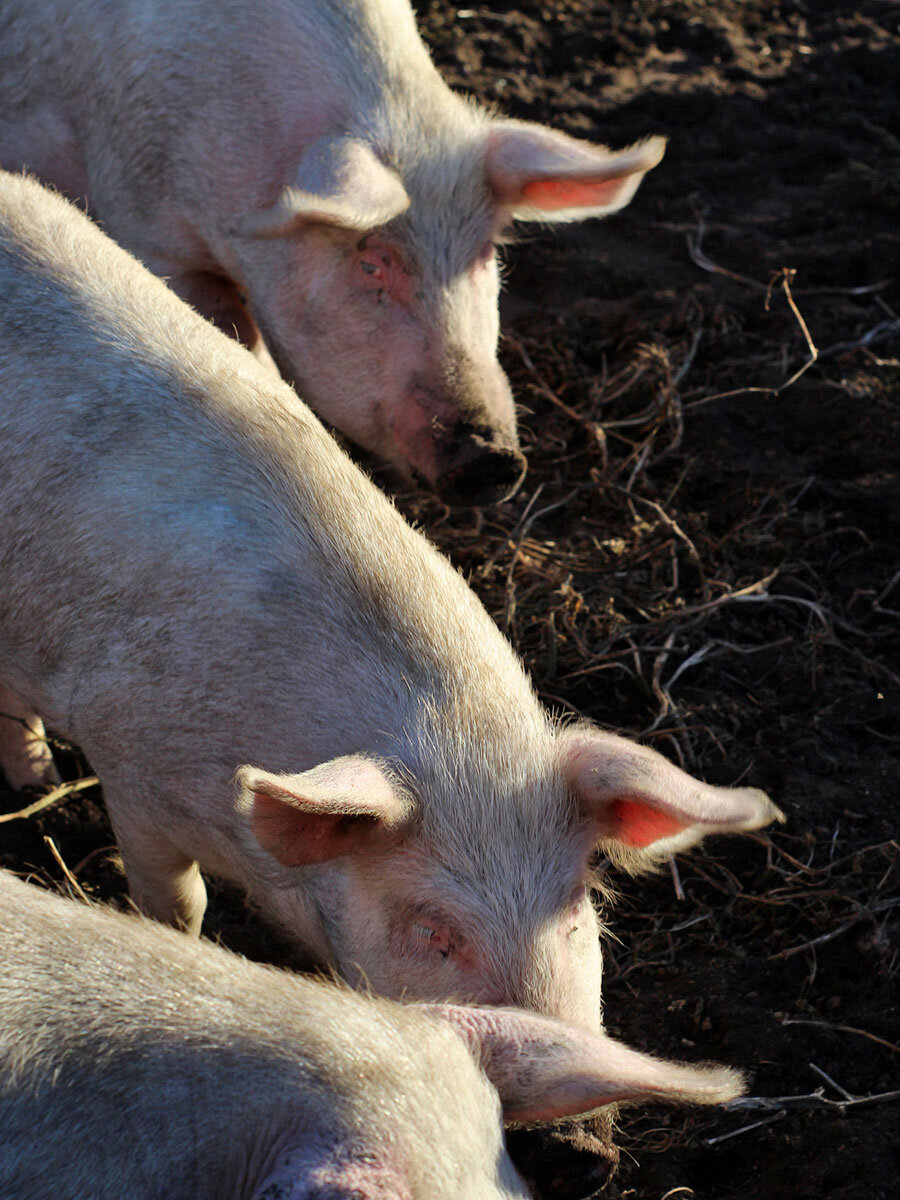Pork
Today, just four meatpackers—Smithfield, Tyson, JBS, and Cargill—control 66% of the U.S. pork slaughterhouse business. But this figure only hints at the real level of concentration in the industry. In many parts of the country, farmers have only one or two packers nearby to sell to. Further, the giants are increasingly taking over the task of breeding, raising, and fattening the hogs: lines of business traditionally performed by independent farmers.
Read More
This corporate consolidation of control over America’s hog market is a relatively new phenomenon. In 1993, 87% of U.S. hogs were sold on the cash market. By 2001, that share had dropped to 17%. The remaining 83% were controlled by packers, either through long-term contracts with farmers or, increasingly, through direct ownership. Today, the number of hogs sold on the open market has shrunk to less than 7% of the total. And the number of farms has fallen as packers gain control of the industry. In 1992, there were more than 240,000 hog farms in the U.S., compared to 56,000 in 2012.
The differences between traditional hog farming and today’s industrial system are extreme. Under the open market system, farmers would breed, raise, and fatten the hogs, then bring them to an auction market where packers would bid against one another for the animals. Along the way, the traditional rules of supply and demand would determine a fair market price. Today, vertically integrated meatpackers own the animals that farmers raise, force farmers to buy specific types of feed, then process the animals in their own slaughterhouses. They then pay farmers a predetermined price for their animals, and sometimes rank farmers against one another to determine the price per pig. This process is opaque to farmers, and can be manipulated if companies provide sick piglets or poor feed.
In some states, farmers managed for many years to use local and state laws to slow or stall the industrialization of hog production. They were aided in some states by long-standing restrictions on corporate ownership of livestock and land. But in recent years, meatpackers have begun to target these state-level restrictions, and in some instances, overturn them. In states where corporations have succeeded in clearing the way for packers to own hogs, the results have been dramatic. In 1997, USDA data show that the majority of hogs were raised on small- or medium-sized farms. Then in 2003, Smithfield successfully sued to overturn that state’s decades-old provision against corporate farming. According to USDA data, the number of hogs in factory farms in Iowa increased by 75% between 1997 and 2007. Now, virtually all of the state’s hogs are raised on industrial farms. Smithfield appears to be targeting the same laws in Nebraska.
Smithfield’s involvement in state-level legislation is also raising alarms due to the fact that a China-based corporation, with strong ties to the Chinese state, now owns the company. WH Group (formerly Shuanghui) is the largest pork producer in the world, with a valuation of around $80 billion. Yet the U.S. Federal Government has left this foreign-owned giant largely free to reshape the law across much of rural America, but also to manipulate market prices in a vital commodity.
Concentration in the pork industry also appears to harm the welfare of pigs. Pigs on factory farms are housed with hundreds, if not thousands, of other animals, sometimes in cages, with little access to the outdoors. Pigs that are confined in such a manner are more likely to get sick, thereby increasing their intake of and resistance to antibiotics. Organizations like the Human Society of the United States have fought long and hard to eliminate gestation crates, small cages for pregnant sows that give the pigs no room to move.
This increasingly extreme concentration of animals also harms the environment. This is especially true of confined animal feeding operations (CAFOs). Waste from those factory operations often results in water pollution, and also has been blamed for ills such as asthma. Animal farming in the US produces over 335 million tons of waste per year, and hog farming accounts for about 20% of that waste.
Parts of this essay were excerpted from “The Last State Standing Against Corporate Farming Weighs a Change,” originally published by Leah Douglas in Fortune.






